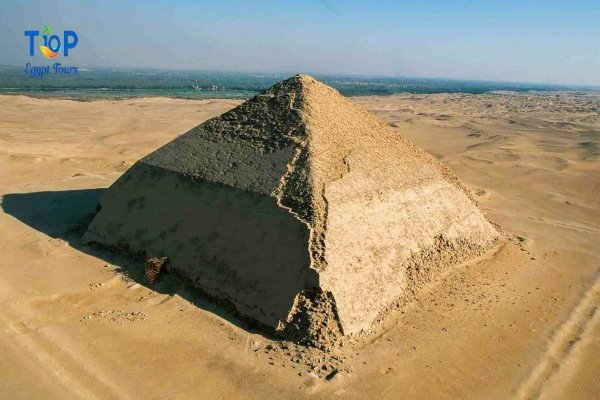King Snefru started the Fourth Dynasty, a time known as the “Age of the Pyramids.” He was the father of Khufu, the pharaoh who built the famous Great Pyramid of Giza. Sneferu ruled Egypt for a long time, about 24 years according to some estimates.
In this article, we will uncover for you the King Sneferu with Top Ten Egypt
King Snefru’s Rule: Military and Trade
During his reign, King Snefru led military campaigns against Libya and Nubia. He also controlled the turquoise mines in Sinai. To build his tombs, he imported 40 ships full of cedar wood.
Sneferu’s Three Pyramids
Sneferu is known for building three pyramids:
- Meidum Pyramid: This pyramid started as a step pyramid but was changed into a true pyramid. However, it had problems with its structure, possibly due to the changes in its design.
- Bent Pyramid: This pyramid in Dahshur has a unique shape. The bottom part has a steep angle, and the top part has a gentler angle.
- Red Pyramid (North Pyramid): Also in Dahshur, this pyramid is named for the reddish color of its stone. It’s one of the first successful true pyramids and is very well preserved.
King Snefru’s Legacy: The Start of Great Pyramids
King Snefru’s work with pyramid building was very important.He laid the foundation for the bigger and more famous pyramids built later in the Fourth Dynasty, like the Great Pyramid of Giza, which his son Khufu built.
Journey through time and discover the kings and queens who left their mark on Egypt. Start your exploration with our Egypt Ruler List.
1- King Hor-Aha
2- King Userkaf



Comment (0)